Bruce Jones has been working in visual effects for over 25 years. He has worked on many films such as Red Planet, The Italian Job, This Is It, A Star is Born.
What is your background?
I have a fine arts degree from the University of California, Santa Barbara, College of Creative Studies. But I’ve been freelancing since I was a teenager, initially doing landscapes and portraits, then later book and magazine covers, posters, murals, even vans – anything to make a buck in the early days!
How did you get involved on this movie?
Anne Kolbe, EVP Visual Effects at Warner Bros introduced me to Lisa.
How was the collaboration with Director Lisa Joy?
One couldn’t ask for a better Director to work with. Lisa’s smart and has a great vision, yet open-minded and places trust in her department heads to enhance her vision whenever possible. In our very first meeting (really an interview), we clicked, and immediately began problem solving the complicated underwater fight scene where our hero Bannister and antagonist Boothe fight at the bottom of a decayed underwater school auditorium.
What was her approach and expectations about the visual effects?
Grounded in reality, gritty, yet beautiful. On the surface, that sounds like a contrast in terms, but not for the world she wanted to create. Oceans have risen, land has been lost, the wealthy live on dry land, and the rest of the world adapts – some live in floating villages, others in abandoned warehouse districts, and others, like Bannister, live behind the walls of great dams that hold back the ocean in ankle-deep water as he tries to carve out a living. It’s not post-apocalyptic, the world has just adapted, and there’s still beauty all around if you just look for it.
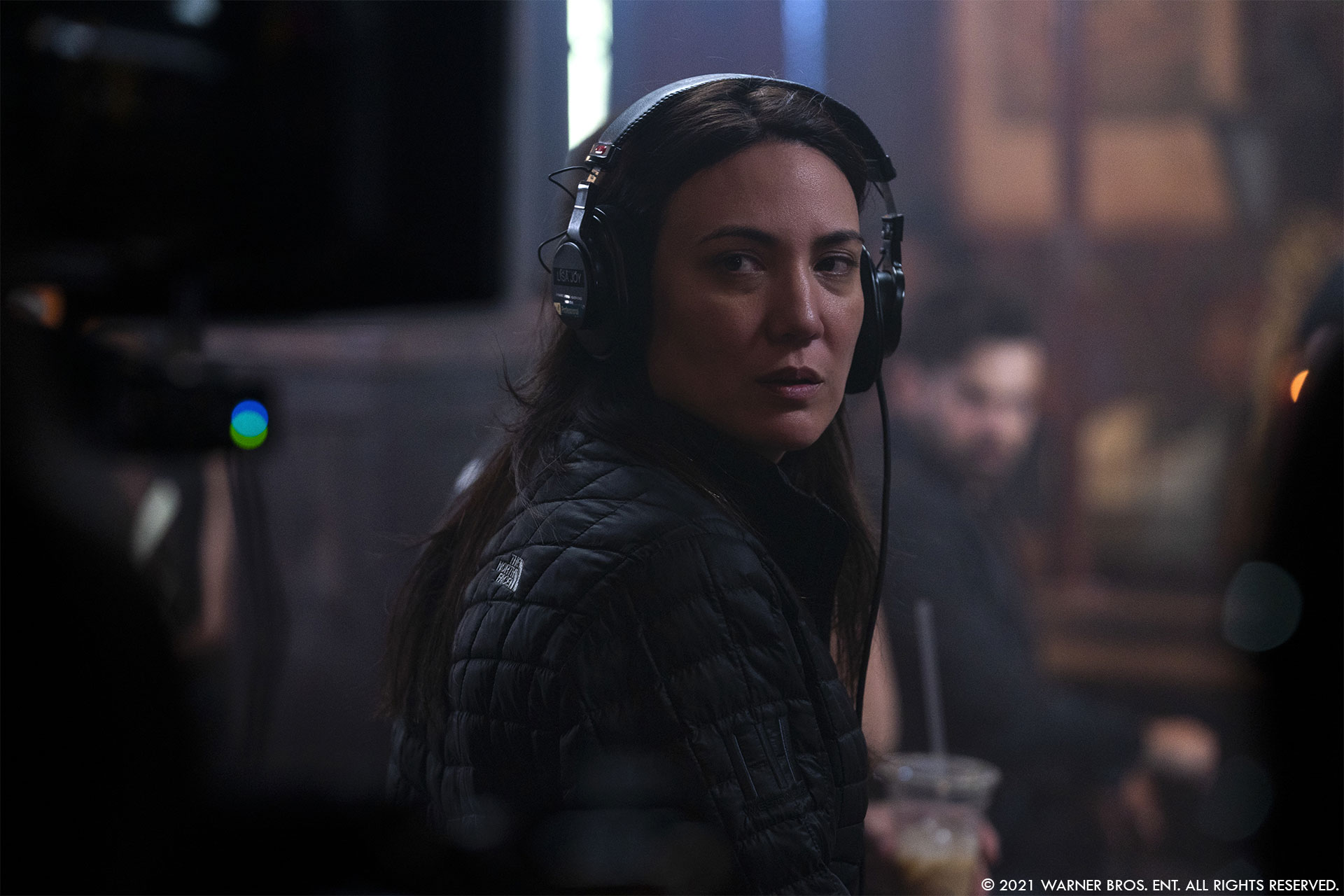
How did you organize the work with your VFX Producer?
Ari Nikjeh, VFX Producer, and I categorized the bulk of the shots into 3 main types of work.
How did you choose the various vendors?
We looked at all the top houses and whittled it down to those we felt best suited the show for the specific type of effects needed.
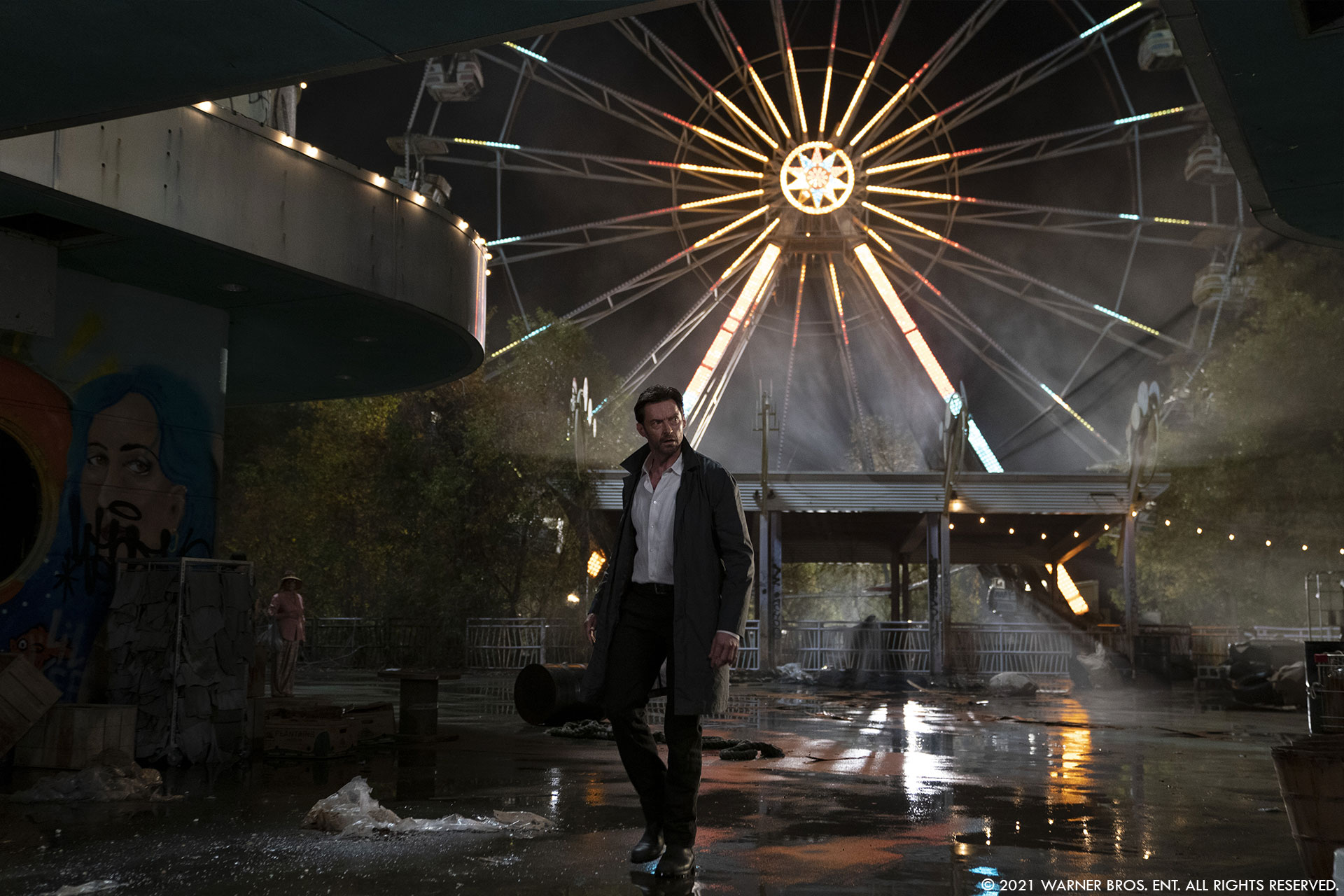
Can you tell us how you split the work amongst the vendors?
We broke the work into 3 categories, primarily. Holographic-related effects, world-building, and other. Holo work went to Scanline who did several weeks of R&D initially in order to come up with a specific look based off of Lisa’s concept of “threads of light illuminated by the memories of those hooked up to the machine”. World-building went to RISE who handled the water-sim and extensions (and un-related, the eels in the tank in St. Joe’s). “Other” went to Hollywood Visual Effects which encompassed numerous comps, extension work, etc.
The film takes place in a Miami largely submerged by water. What was your approach about it?
Lisa wanted the audience to know this film took place in Miami – the texture and colors of Miami, the way the atmosphere in the air effects the light – so even though we shot the bulk of our movie in New Orleans, we took our entire main unit to Miami for about a week and shot several scenes out there. While there, we shot a lot of drone and rooftop pieces for “scope”, plates that would enhanced and peppered throughout the film reminding our audience of where we were.
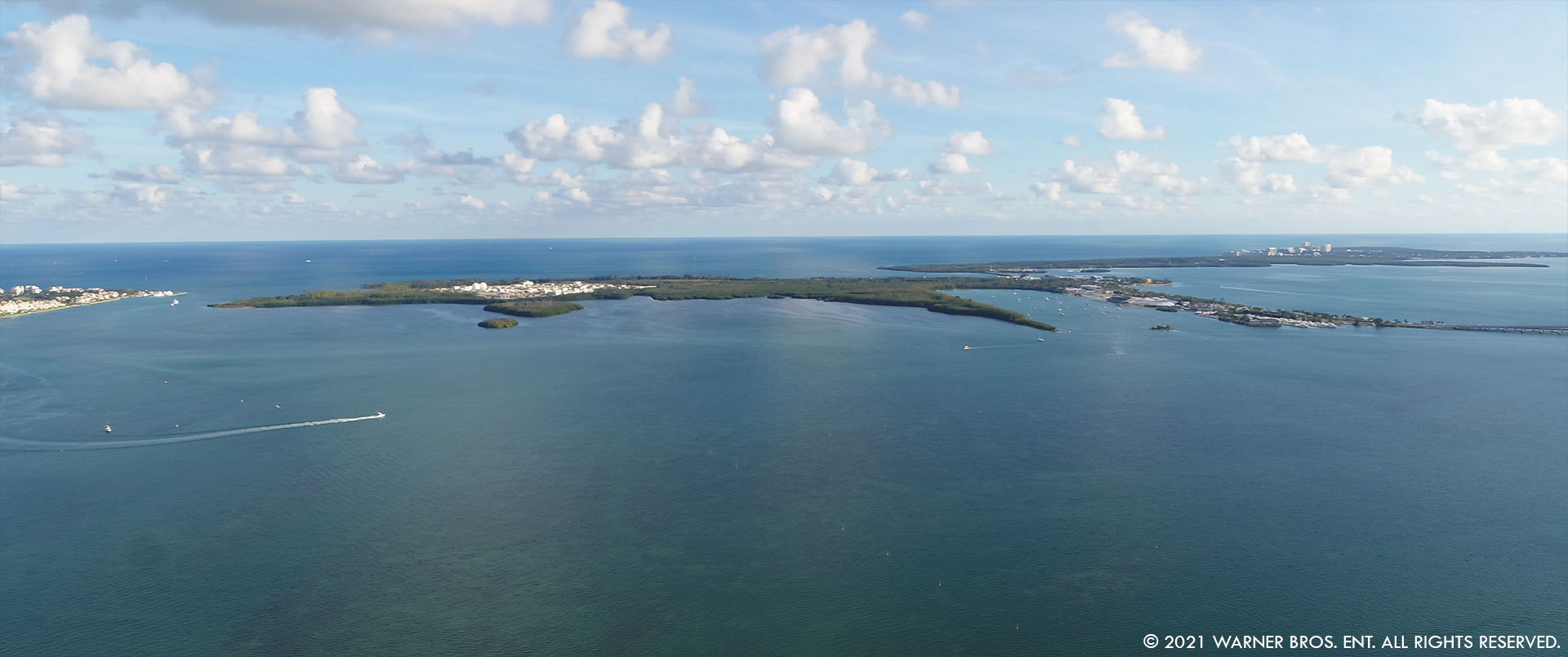
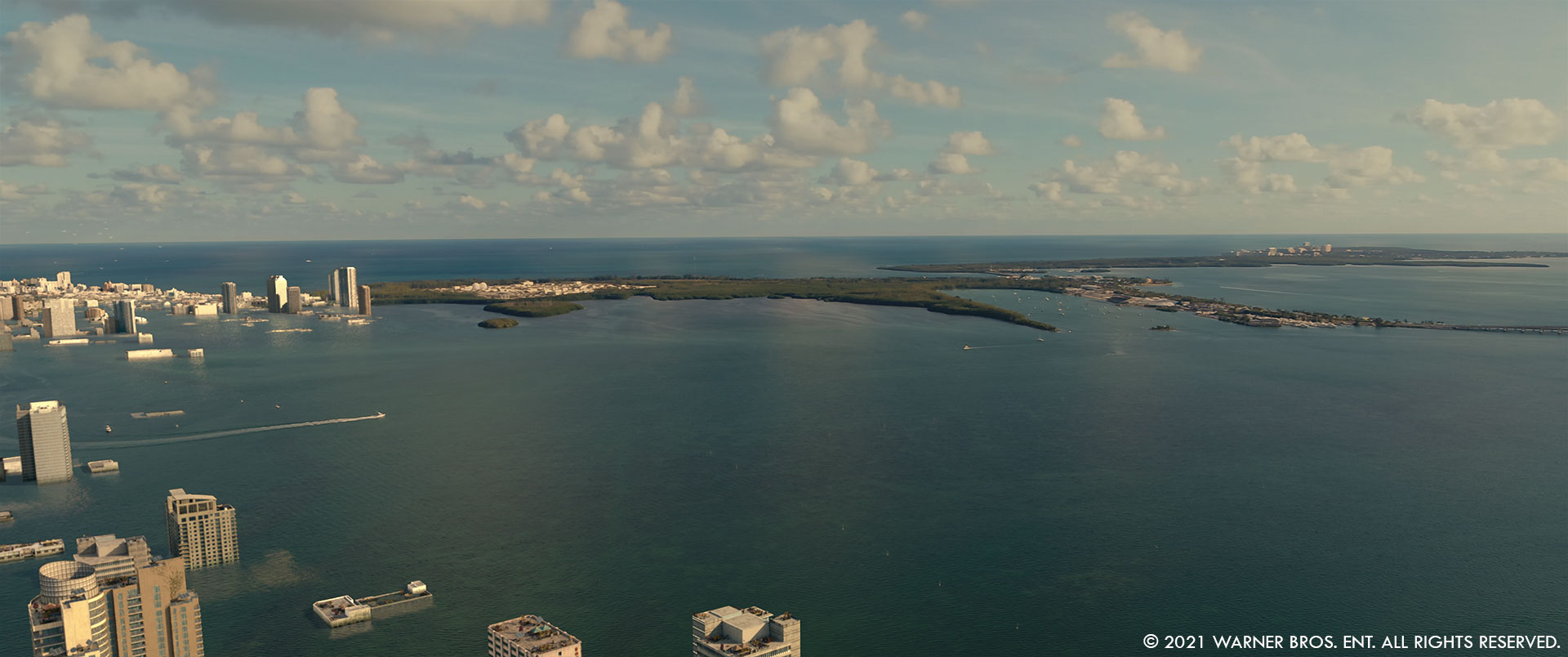
Can you elaborates about the impressive opening shot?
We wanted a shot that immediately pulled you into our world – beginning with ocean waves and then tilting up to partially submerged skyscrapers along a sunken coast. RISE did the opening shot, using drone footage as a reference but from there literally building the entire world in CG including digi-doubles throughout. 2/3rds through the shot we hook our CG world up with the plate photography that takes us into a puddle with Hugh reflected in it as he reaches down to pick up a “Queen of Hearts” submerged just below the surface.
Length of opening shot: 3267 frames from “waves to Bannister picking up the card”.
If you include the title (which it does) then it would be 4395 frames (from WB shield to Bannister picking up the card) – that’s just over a 3 minute opening shot.
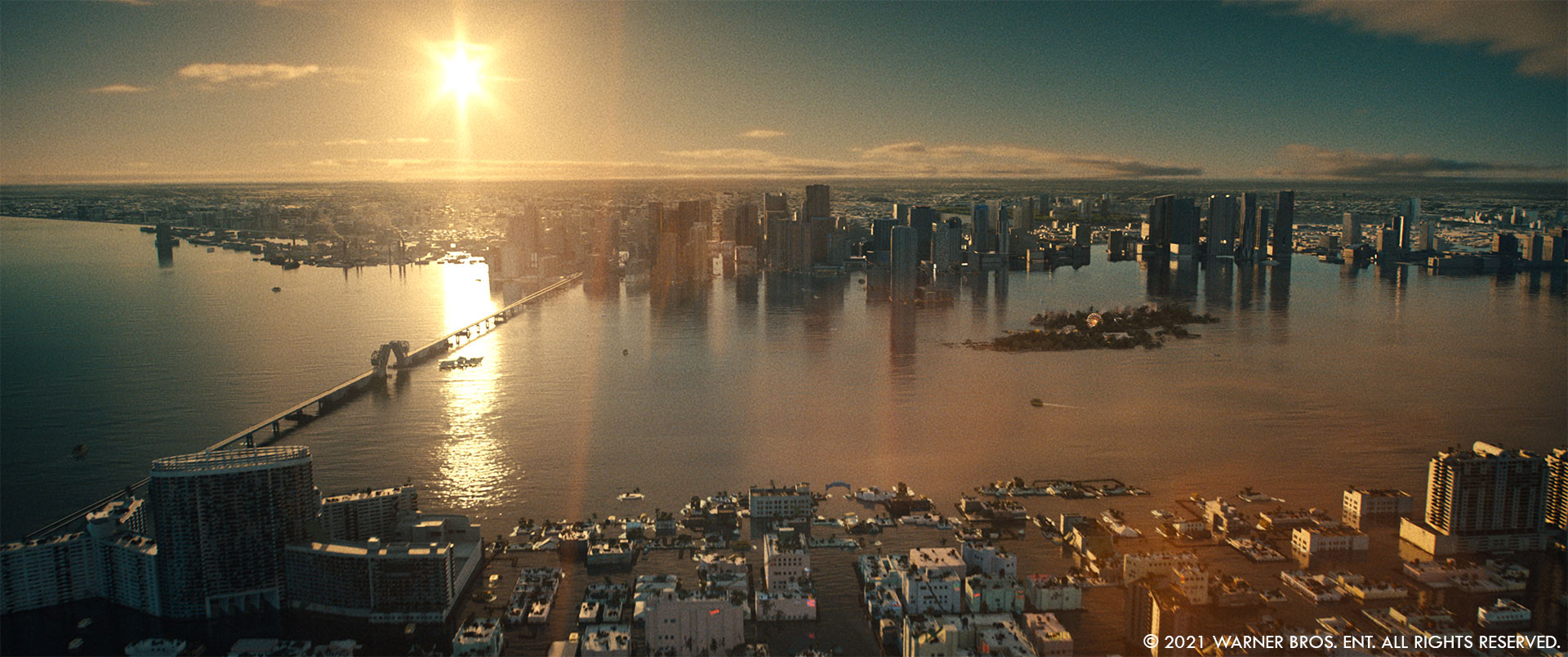
Where was filmed the various exteriors sequences?
Miami for a number of our world-building shots, but also many locations in New Orleans, including the abandoned amusement park which is an actual abandoned Six Flags amusement park just outside of Nola.
How did you handle the lighting challenges for the water sequences?
We shot the sequence in a blackened pool in New Orleans with a Zenon light reflected back into a mirror. For the elements of Bannister and Boothe going to the bottom of the underwater auditorium, we shot those on horizontal runs about 4’ beneath the surface of the water and then rotated them in the comp to give the illusion they were heading to the bottom of the auditorium floor.
The city is also seen many times by night. How does that affects your work?
Being that Miami is such a neon-lit city, it worked in our favor. Our sets were designed with this in mind, so we referenced what had been envisioned by our Production Designer (Howard Cummings), and how our DP (Paul Cameron) lit the actual sets. We used their work as a guide to light our night shots, taking advantage of the control we have in CG to enhance details and placement for reflections in the water in order to best frame the shots for story.
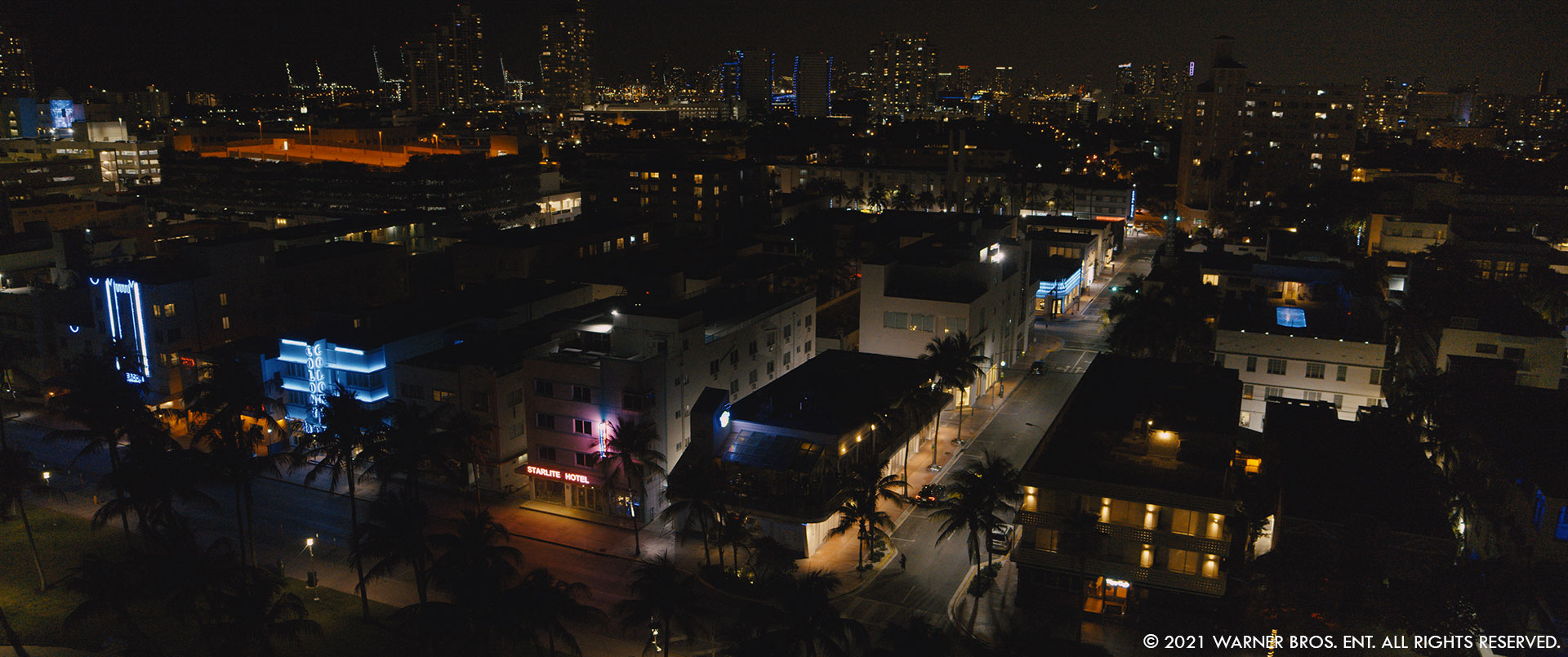
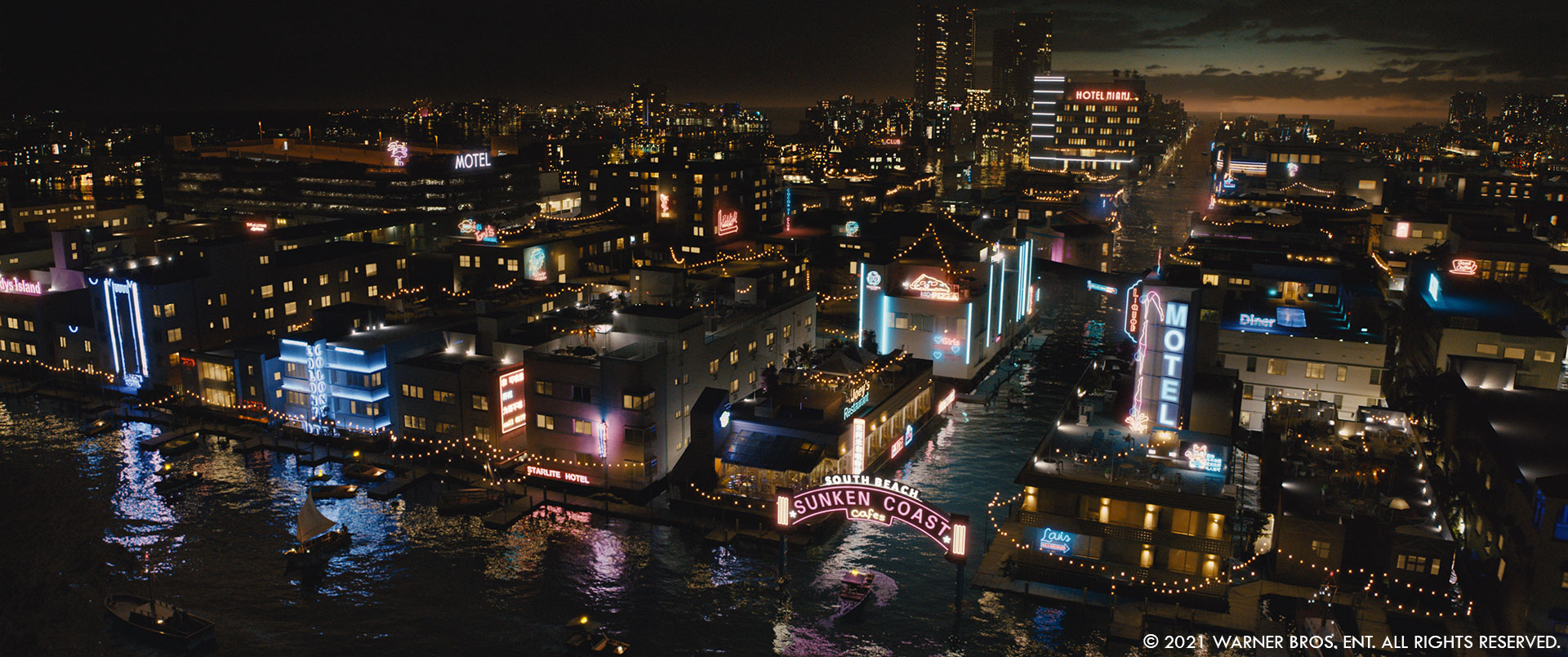
What are the main challenges with a submerged city and water everywhere?
In terms of the CG; camera solves and creating collision objects of the plates for water sims. But for our “sunken coast” set, it was working in a couple feet of water with hip waders for hours on end.
Hugh Jackman character use a machine with holograms. How did you work with the art department about them?
It began with concept art. From there the Art Department created Sketchup models, followed by an actual build of the base of the “hamburger” (the lower part of the hologram machine). The upper part (which had to rise in a couple of scenes) was fully CG, as were the threads of light that illuminate the memories of our characters.
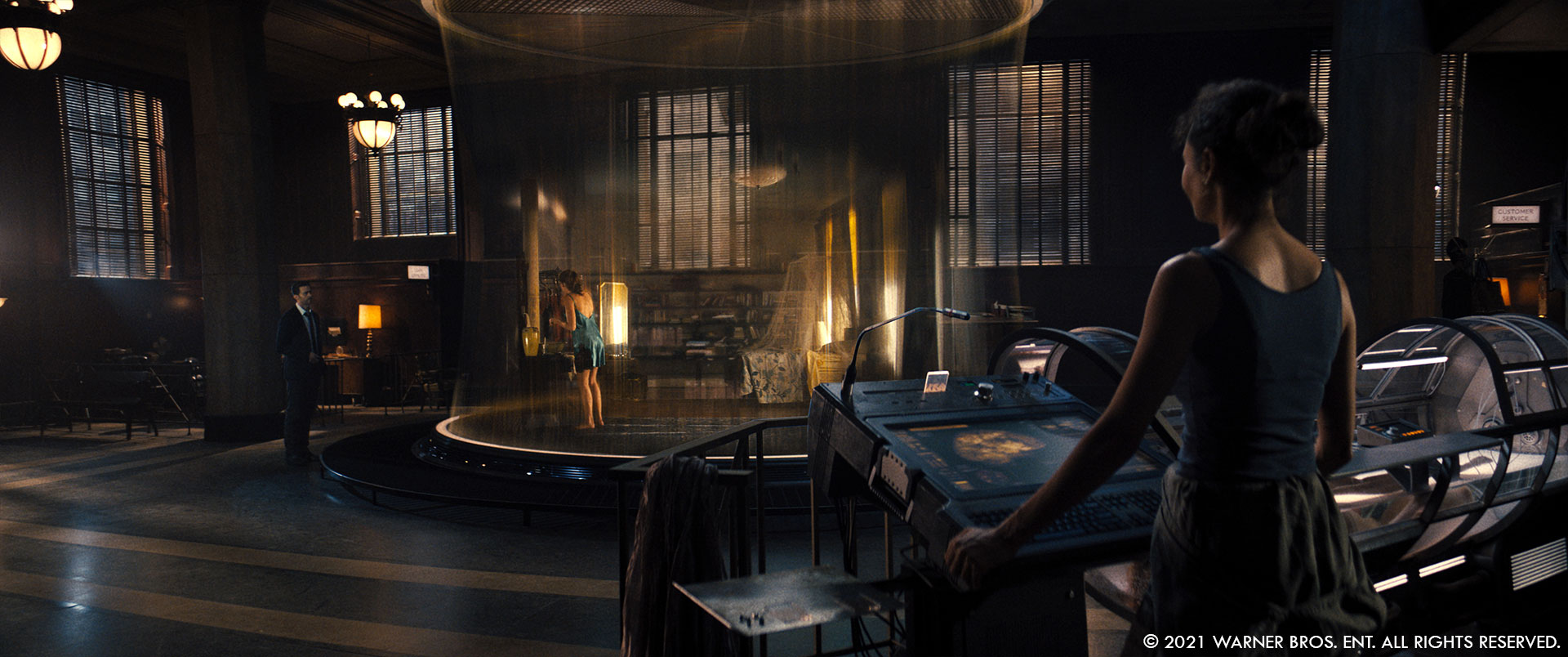
What kind of references and influences did you received for the holograms?
We researched physical holographic effects, studied what had been done in films prior, and then put all that aside and focused on creating something based in reality. We accomplished this by adding a hint of transparency to the darkest areas of the plate, and slightly exaggerated light bloom to the specular kicks – just enough to remind our viewers that they were in fact looking at a hologram and not a real person or scene. This was best achieved by having camera movement, which exemplified the parallax, part of the language of matching our A-side element shoot to our B-side performances with Hugh.
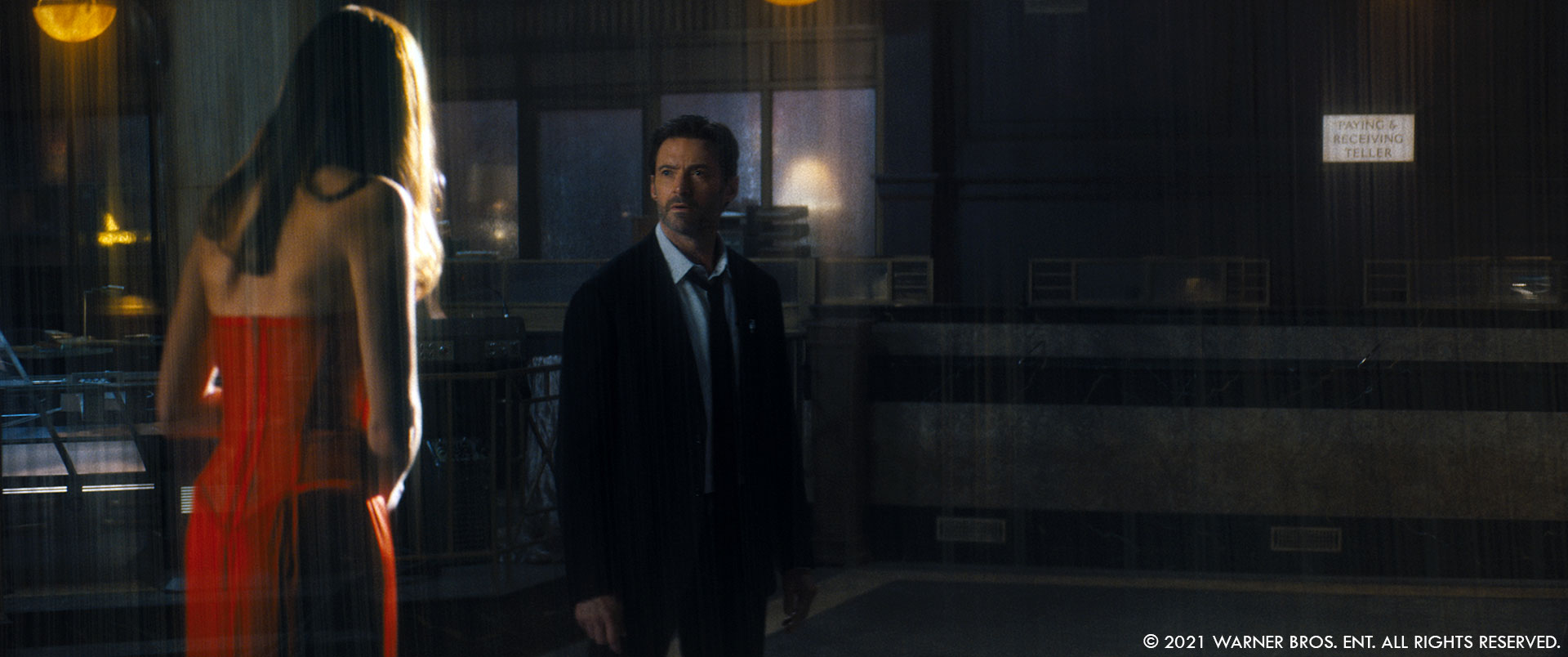
How did you help Hugh Jackman for his interactions when he goes inside the machine?
We had the actual actors in place for Hugh to interact with, then had them step aside for his performance element.
How did you create the threads of the machine?
Conceptually, it started from the artwork, followed by lots of look testing and effects simulations.
The action sequences have slow-motion shots. Can you tell us more about your work on those shots?
This was a stylistic choice for director and DP. VFX primarily had re-times and paint clean up to do on those sequences.
Which sequence or shot was the most challenging?
The opening shot was monumental and we’re very proud of that, but the hologram shots were equally challenging because of the subtlety required in making it feel that our hero (Bannister) could almost reach out and touch his lover (Mae) while still knowing (both Bannister and the audience) that it was just an illusion.
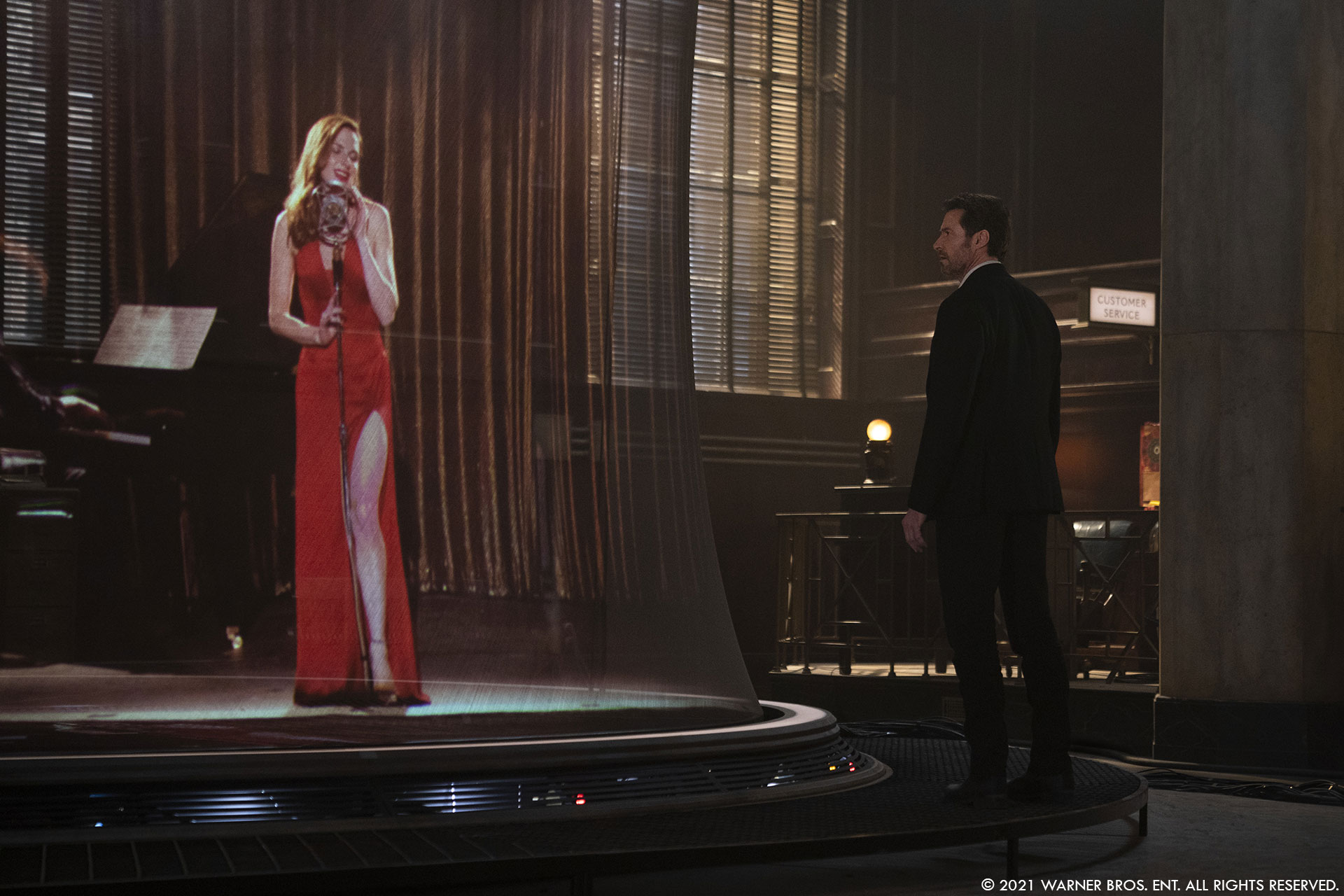
Did you want to reveal to us any other invisible effects?
Many. Extensions, split-comps, paint-outs, beauty passes, etc.
Is there something specific that gives you some really short nights?
In general, virtual productions. So many moving parts that all have to come together and work live on the day, no post. The hologram effects on Reminiscence took it to the next level. I’m now on my 5th film involving virtual production aspects and it all lands mostly on VFX. The tough part is that it all has to be figured out ahead of time because when the director calls “action”, you’re live.
What is your favorite shot or sequence?
I have a few; the shot where Bannister and May connect in the hologram and for a brief moment we feel that they are magically together; the shot where our lovers spend time on the rooftop of her apartment while the waters from the ocean has risen throughout the city making their place an island to itself; the shot where we fly over Boothe’s sunken and decaying warehouse district; and the opening shot of the movie where we show the scope of this world we are about to enter.
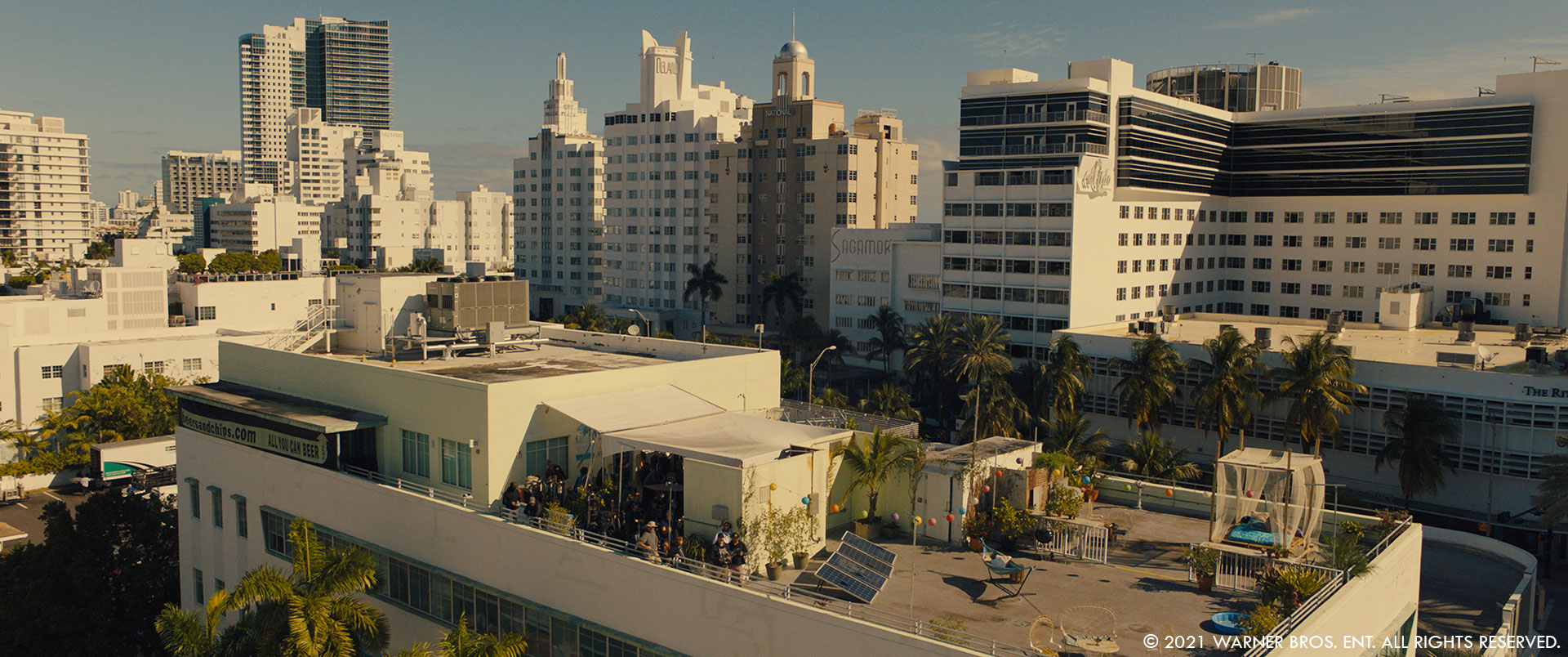
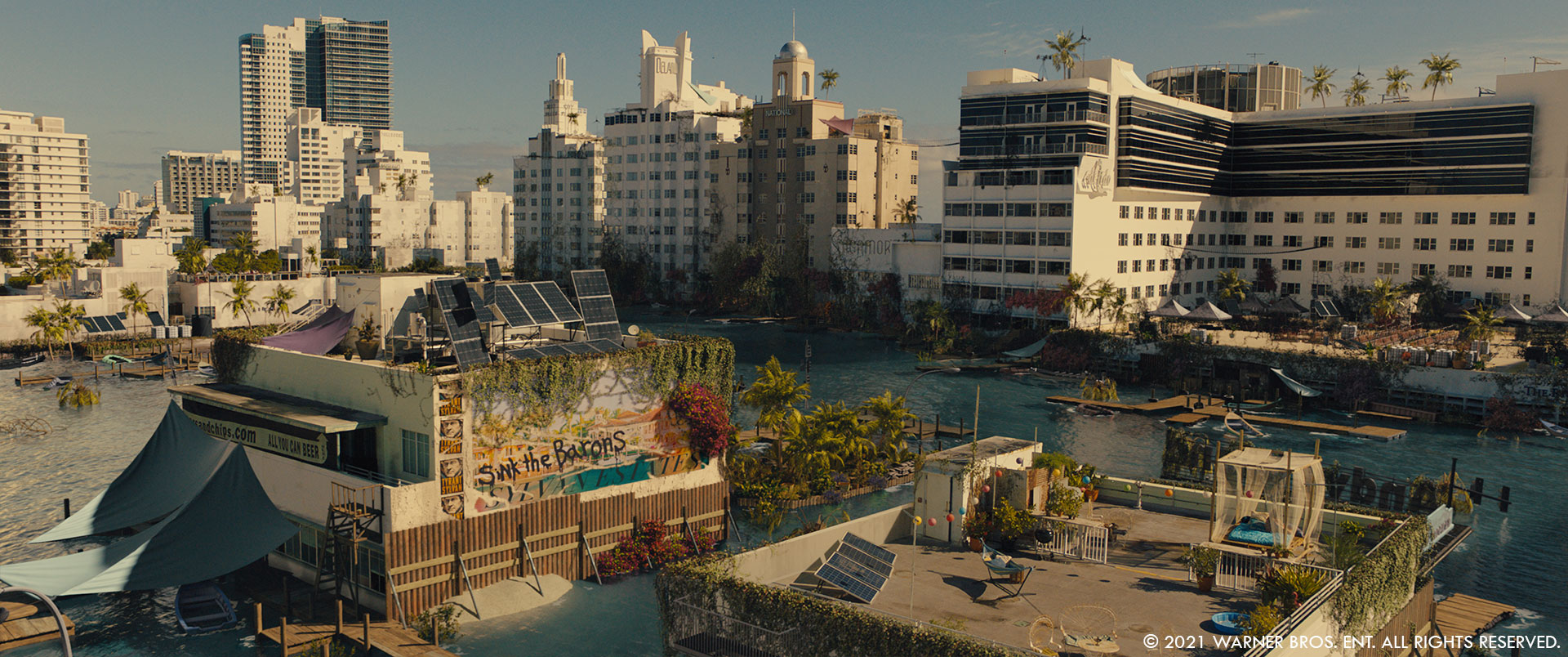
What is your best memory on this show?
On a location scout in Miami. I have a picture of Lisa pointing at a sign that said “Mama Tried” with a quirky expression on her face, that’s certainly one of my favs.
How long have you worked on this show?
A little over a year.
What’s the VFX shots count?
Final shot count was just under 700, per my VFX Producer, 692 to be exact.
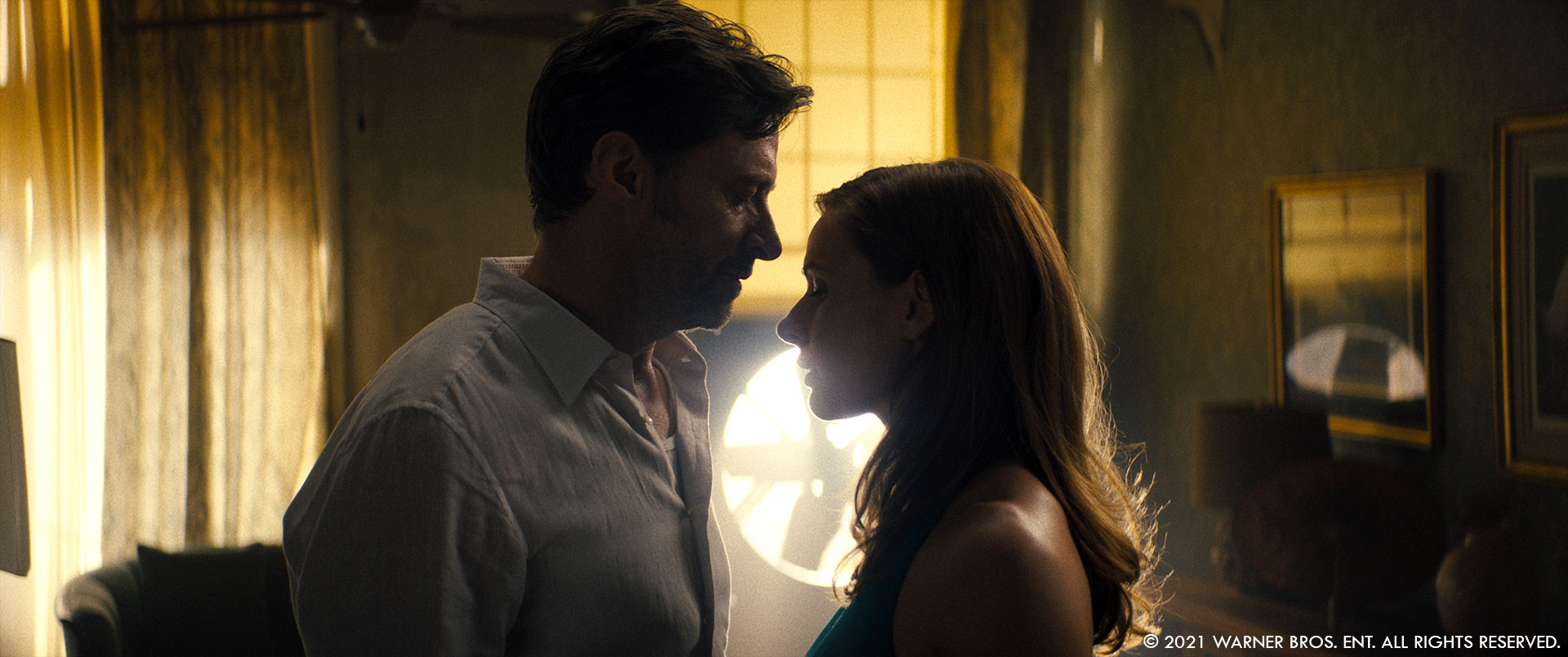
What is your next project?
I went on to do a Steven Soderbergh project, called Kimi. Am still in post on it, while shooting Shazam! Fury of the Gods in Atlanta.
What are the four movies that gave you the passion for cinema?
Yikes! I’d have to think about that…
A big thanks for your time.
WANT TO KNOW MORE?
RISE: Dedicated page about Reminiscence on RISE website.
HBO Max: You can watch Reminiscence on HBO Max.
© Vincent Frei – The Art of VFX – 2021




